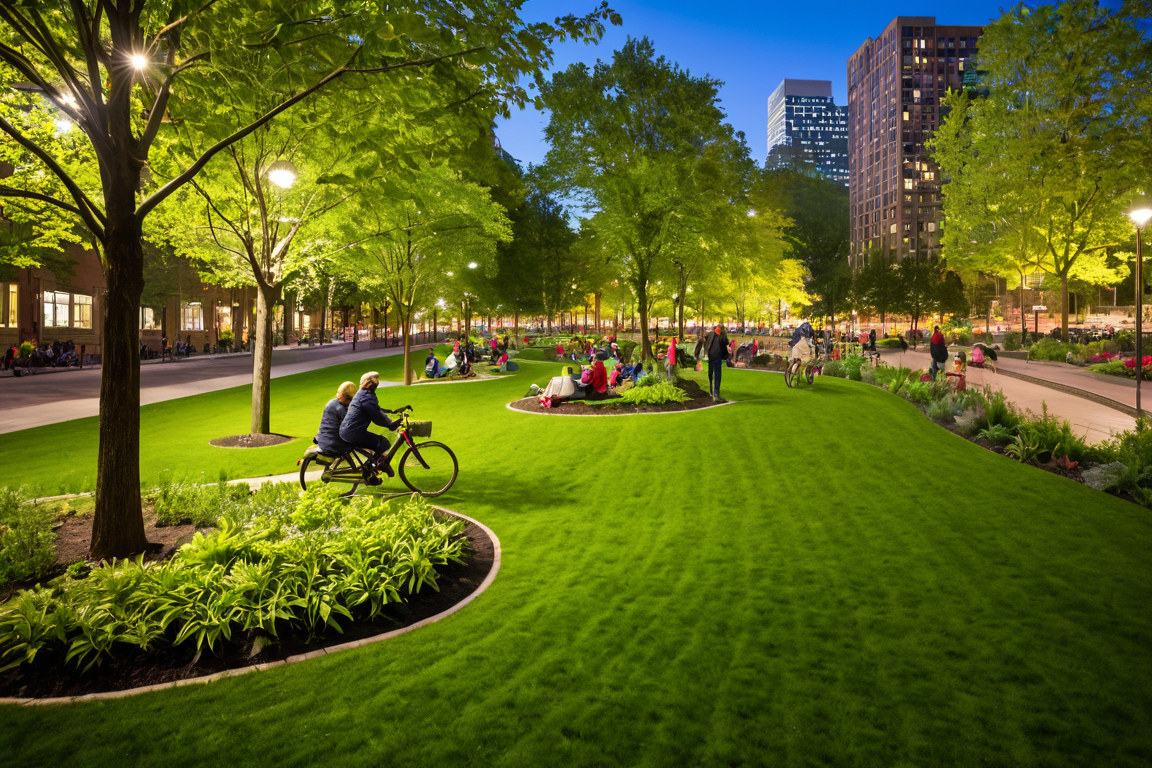Introduction
In the midst of bustling cities, urban green spaces and parks offer a vital respite from the concrete jungle, providing not only recreational opportunities but also essential ecological benefits. These green havens play a crucial role in promoting sustainability, enhancing biodiversity, and improving the quality of life for urban residents. Let’s explore some of the best eco-friendly city parks around the world, each exemplifying a commitment to environmental stewardship and sustainability.
1. Central Park, New York City, USA
Sustainable Management: Central Park, an iconic green oasis in the heart of Manhattan, is a model of sustainable urban park management. The park employs a range of eco-friendly practices, including waste reduction initiatives, organic landscaping, and efficient water conservation systems. These efforts help maintain the park’s lush greenery while minimizing its environmental impact.
Activities and Attractions: Visitors to Central Park can enjoy a variety of activities and attractions. From scenic walking trails and serene boating experiences on the lake to vibrant cultural events and performances, the park offers something for everyone. The integration of natural beauty with cultural amenities makes Central Park a beloved destination for both locals and tourists.
2. Hyde Park, London, UK
Biodiversity: Hyde Park, one of London’s most famous green spaces, is renowned for its rich biodiversity. Home to a diverse array of wildlife and plant species, the park provides a natural haven for nature enthusiasts. The extensive meadows, woodlands, and water bodies support a thriving ecosystem, making it an urban biodiversity hotspot.
Eco-Friendly Initiatives: Hyde Park is committed to sustainable landscaping and waste management practices. The park employs organic gardening techniques, composting programs, and rainwater harvesting systems to maintain its ecological balance. These initiatives not only enhance the park’s beauty but also promote environmental sustainability.
3. Stanley Park, Vancouver, Canada
Sustainable Practices: Stanley Park, a natural gem in Vancouver, is celebrated for its sustainable forestry and conservation efforts. The park’s management focuses on preserving its ancient forests, protecting wildlife habitats, and promoting ecological education. Sustainable practices, such as selective logging and habitat restoration, ensure the long-term health of the park’s diverse ecosystems.
Activities: Stanley Park offers a plethora of recreational activities for visitors. With extensive walking and biking trails, picturesque beaches, and beautifully maintained gardens, the park is a paradise for outdoor enthusiasts. The iconic Seawall, which encircles the park, provides breathtaking views of the ocean and mountains, making it a must-visit destination.
4. Ueno Park, Tokyo, Japan
Cultural and Natural Attractions: Ueno Park, a historic park in Tokyo, seamlessly blends cultural heritage with natural beauty. The park is home to numerous museums, temples, and historical monuments, offering a rich cultural experience. Amidst these attractions, visitors can also enjoy the park’s lush landscapes, tranquil ponds, and seasonal cherry blossoms.
Eco-Friendly Features: Ueno Park incorporates green design elements and sustainable practices to minimize its environmental impact. Initiatives such as energy-efficient lighting, eco-friendly waste disposal systems, and the use of native plant species demonstrate the park’s commitment to sustainability. These efforts enhance the park’s charm while promoting ecological responsibility.
5. Tiergarten, Berlin, Germany
Sustainable Management: Tiergarten, a green haven in the heart of Berlin, is maintained with a strong focus on sustainability and biodiversity. The park’s management employs eco-friendly landscaping techniques, promotes native plant species, and implements wildlife conservation programs. These efforts create a thriving urban ecosystem that benefits both people and nature.
Recreational Activities: Tiergarten offers a wide range of recreational activities for visitors. The park’s expansive green spaces are perfect for walking, cycling, and picnicking. Additionally, Tiergarten’s serene lakes, charming gardens, and historical monuments provide a tranquil escape from the urban hustle and bustle.
Conclusion
Urban green spaces like these parks are essential for fostering sustainability, enhancing biodiversity, and improving the quality of life in cities. By visiting and supporting eco-friendly city parks, we can enjoy the beauty of nature while promoting environmental stewardship in urban areas. Embrace the green spaces around you and contribute to a sustainable future for our cities.






